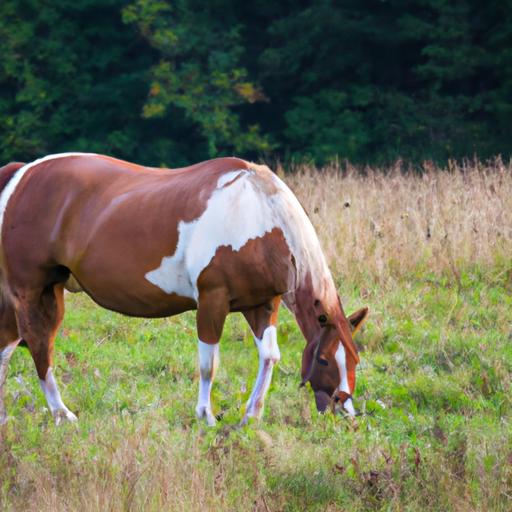Unlock the secrets of effective horse training with horse behaviour worksheets. Learn how to set goals, observe, analyze data, and adjust strategies for success.
Introduction

Have you ever wondered what goes on in the mind of a horse? Understanding horse behaviour is crucial for building a strong bond with these majestic creatures and ensuring successful training sessions. Luckily, there’s a powerful tool that can help you delve into the intricate world of horse behaviour – horse behaviour worksheets. In this article, we’ll explore what these worksheets are, the importance of understanding horse behaviour, and how these worksheets can revolutionize your horse training techniques.
What are horse behaviour worksheets?
Horse behaviour worksheets are invaluable resources that allow horse trainers and owners to observe, analyze, and track the behaviour patterns of their equine companions. These worksheets provide a systematic approach to understanding the complex factors that influence horse behaviour, enabling trainers to tailor their training methods accordingly. By using these worksheets, you can gain valuable insights into your horse’s preferences, triggers, and progress, leading to more effective and harmonious training sessions.
Importance of understanding horse behaviour
As horse lovers, we all strive to create a deep and trusting connection with our equine partners. Understanding their behaviour is the key to achieving this connection. Horses are highly social animals with intricate communication systems and unique instincts. By comprehending their natural behaviours, we can adapt our training techniques to suit their individual needs, fostering a relationship built on mutual understanding and respect.
How horse behaviour worksheets can assist in horse training
Imagine having a roadmap that guides you through the labyrinth of horse behaviour. Horse behaviour worksheets provide just that. By utilizing these worksheets, you can identify behavioural issues, pinpoint their root causes, and develop personalized training plans tailored to your horse’s specific needs. These worksheets serve as a compass, helping you navigate through challenges and make informed decisions, ultimately leading to better training outcomes for both you and your horse.
Now that we understand the significance of horse behaviour worksheets, let’s delve deeper into the world of horse behaviour in Section II of this article. Get ready to unravel the secrets behind their innate instincts and the factors that shape their behaviour.
Understanding Horse Behaviour
Basic Instincts and Natural Behaviours of Horses
To truly comprehend horse behaviour, we must first explore their basic instincts and natural behaviours. Horses are prey animals, and their survival instincts play a significant role in shaping their behaviour. They have a strong flight response, which means they are quick to react to perceived threats and seek safety in flight. Understanding and respecting this instinctual response is crucial when working with horses.
Horses also exhibit a range of natural behaviours that are essential for their well-being. These behaviours include grazing, socializing with other horses, grooming, and engaging in play. Observing these natural behaviours allows us to understand their needs and preferences, providing insight into how we can create an environment that supports their physical and mental health.
Factors Influencing Horse Behaviour
While innate instincts form the foundation of horse behaviour, several external factors also influence their actions. Let’s dive into some of the key factors that shape horse behaviour:
1. Herd Dynamics
Horses are herd animals by nature, and their behaviour is heavily influenced by the dynamics within their social groups. Understanding the hierarchy, communication, and social interactions within a herd helps us comprehend how horses relate to one another and how they respond to human interactions.
2. Environment and Surroundings
The environment in which a horse lives and interacts greatly impacts their behaviour. Factors such as stable conditions, pasture quality, and availability of shelter affect their comfort and overall well-being. Additionally, exposure to various stimuli like loud noises, unfamiliar objects, or different terrains can elicit different behavioural responses.
3. Past Experiences
Just like humans, horses carry memories of past experiences that shape their behaviour. Positive experiences can foster trust and confidence, while negative experiences may lead to anxiety or fear-based reactions. Understanding a horse’s history allows us to approach training with empathy and tailor our methods accordingly.
4. Health and Physical Condition
A horse’s behaviour can be influenced by their physical well-being. Pain, discomfort, or underlying health issues can manifest in changes in behaviour or performance. Regular veterinary care, proper nutrition, and exercise contribute to a horse’s overall health and can positively impact their behaviour.
With a solid understanding of the basic instincts and external factors that shape horse behaviour, we can now explore the benefits of incorporating horse behaviour worksheets in Section III of this article. These worksheets will provide us with valuable tools to decode and analyze their behaviour patterns, leading to more effective training strategies.
Benefits of Using Horse Behaviour Worksheets
Horse behaviour worksheets offer a plethora of benefits that can greatly enhance your horse training journey. Let’s explore the key advantages they provide, empowering you to become a more effective and empathetic handler.
Enhancing communication between horse and handler
Clear and effective communication is the cornerstone of successful horse training. Horse behaviour worksheets act as a bridge, facilitating communication by allowing you to observe and understand your horse’s actions, reactions, and body language. By meticulously documenting their behaviours, you can decipher their signals, preferences, and boundaries. This newfound understanding enables you to establish trust and build a stronger connection with your equine companion, fostering a harmonious partnership.
Identifying behavioural issues and their root causes
Every horse has its own unique quirks and challenges. Horse behaviour worksheets enable you to identify behavioural issues and delve deeper into their underlying causes. By consistently tracking and analyzing your horse’s behaviour, patterns and triggers may emerge, shedding light on potential sources of discomfort or fear. Armed with this knowledge, you can address these issues with targeted training techniques, helping your horse overcome obstacles and develop into a more confident and balanced individual.
Developing personalized training plans based on horse’s behaviour
One size does not fit all when it comes to horse training. Each horse possesses distinct traits and learning styles. Horse behaviour worksheets empower you to create personalized training plans tailored to your horse’s specific needs. By closely monitoring their progress and responses to various stimuli, you can adapt your training methods accordingly. This customization ensures that your horse receives the most effective and efficient training, maximizing their potential and fostering a positive learning experience.
As we can see, horse behaviour worksheets provide invaluable tools for enhancing communication, identifying behavioural issues, and developing personalized training plans. In Section IV, we will explore the different types of horse behaviour worksheets available, allowing you to choose the most suitable approach for your training goals. Get ready to dive into the world of observation-based and training-based worksheets, unlocking the full potential of your horse training journey.
Section IV: Types of Horse Behaviour Worksheets
Understanding the different types of horse behaviour worksheets is essential to effectively analyze and track your horse’s progress. These worksheets can be categorized into two main types: observation-based and training-based worksheets.
A. Observation-based worksheets
Observation-based worksheets allow you to carefully observe and document your horse’s behaviour patterns. By tracking these patterns, you can gain insights into their responses to various stimuli and better understand their natural tendencies. Here are two key components of observation-based worksheets:
1. Tracking horse behaviour patterns
Observation-based worksheets provide a structured format to record and track your horse’s behaviour patterns over time. This involves monitoring their actions, reactions, and interactions within their environment. By consistently noting these patterns, you can identify any recurring behaviours, triggers, or preferences your horse may have.
2. Documenting reactions to specific stimuli
Horses react differently to various stimuli, whether it’s a new object, a specific sound, or a change in their surroundings. Observation-based worksheets allow you to document your horse’s reactions to specific stimuli, helping you identify any triggers that may cause anxiety or fear. This knowledge can then be utilized to develop strategies to desensitize or counter-condition your horse.
B. Training-based worksheets
Training-based worksheets focus on tracking your horse’s progress during training sessions. These worksheets serve as a record of your training efforts and help you monitor your horse’s development over time. Here are two key components of training-based worksheets:
1. Monitoring progress during training sessions
Training-based worksheets provide a structured format to track your horse’s progress during training sessions. You can record the exercises or tasks performed, the level of difficulty, and your horse’s response to each exercise. This enables you to identify areas of improvement and adjust your training techniques accordingly.
2. Recording behavioural changes over time
Behavioural changes occur as a result of consistent training efforts. Training-based worksheets allow you to document and analyze these changes over time. By comparing your horse’s behaviour before and after training, you can evaluate the effectiveness of your training methods and make necessary adjustments to achieve desired outcomes.
By utilizing both observation-based and training-based worksheets, you can gain a comprehensive understanding of your horse’s behaviour and progress. In the next section, we will explore how to effectively implement and utilize horse behaviour worksheets for maximum training benefits. Get ready to take your horse training to the next level in Section V!
Conclusion
In the realm of horse training, understanding horse behaviour is the key to unlocking success. Horse behaviour worksheets provide a valuable tool for trainers and owners to delve into the minds of their equine companions and develop effective training strategies. By following a step-by-step approach, you can harness the power of these worksheets to establish goals, observe and analyze behavioural patterns, and make informed adjustments to your training techniques.
By utilizing horse behaviour worksheets, you enhance your communication with your horse, identify and address behavioural issues, and develop personalized training plans tailored to their unique needs. This deeper understanding of your horse’s behaviour allows you to build a strong bond and mutual trust, leading to more harmonious and rewarding training sessions.
At Horsemasterypro.com, we understand the significance of horse behaviour in achieving training mastery. That’s why we encourage you to incorporate horse behaviour worksheets into your training routine. Embrace the journey of uncovering the secrets of horse behaviour, and witness the transformation in your relationship with your equine partner.
Remember, the path to becoming a skilled horse trainer is a continuous learning process. Stay curious, be patient, and embrace the insights gained through horse behaviour worksheets. Together, we can create a world where horses and humans thrive in harmony.
So, what are you waiting for? Visit Horsemasterypro.com today and embark on a journey towards mastering horse behaviour and unlocking the full potential of your equine partner.
*Note: Horsemasterypro.com is a brand focused on providing comprehensive resources and guidance for horse training and behaviour.


